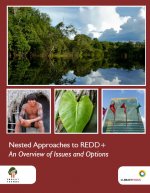Nested Approaches to REDD+
An Overview of Issues and Options
By Jacob Olander, Joerg Seifert-Granzin, Thiago Chagas, Charlotte Streck, Robert O'Sullivan - Forest Trends, Forest Trends, Climate Focus, Climate Focus, Climate Focus, Climate Focus View PublicationInterest in “nested” approaches to REDD+ has grown steadily as policy makers, practitioners and investors seek to reconcile approaches to reducing, and rewarding, emissions reductions at different scales – national, subnational and project. The 16th session of the Conference of the Parties to the UNFCCC in Cancun marked the UNFCCC’s formal acknowledgement of subnational approaches to REDD+ accounting and monitoring. National “readiness” processes for REDD+ in many countries explicitly seek to incorporate nested projects or demonstration activities, as do state or provincial mechanisms under the Governors´ Task Force on Climate and Forests.
For developing country policymakers, putting nesting into practice represents a series of complex decisions at a time when policy and market conditions are still very much in flux. While many countries and international institutions recognize the relevance of nested approaches, relatively little progress has been made in establishing regulatory and accounting systems that explicitly support nesting.
This report, targeted to parties engaged in on-the-ground decisions about how to address REDD+, discusses the main issues and options that need to be considered in developing nested frameworks for harmonizing emission reductions at the jurisdictional and project scales. The report focuses on mechanisms for recognition of project-level activities within national or subnational programs as a means to mobilize private investment and non-governmental action on REDD+. This report draws on input from an international workshop on Nested Approaches to REDD+ convened by Forest Trends in March 2011, with participants from a dozen countries.
We believe that this report is an important milestone in moving on-the-ground REDD+ activities forward and strengthening policymakers’ understanding of options for putting nested approaches into practice.

